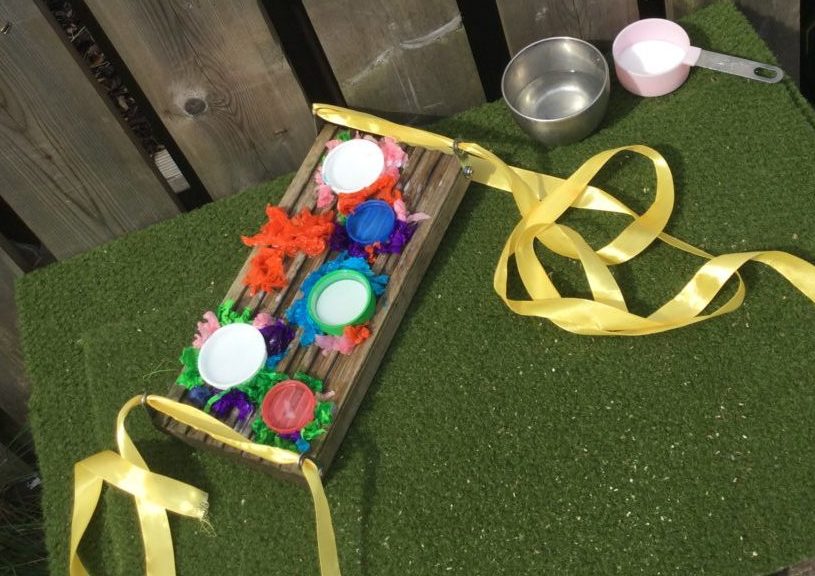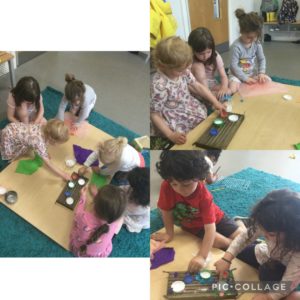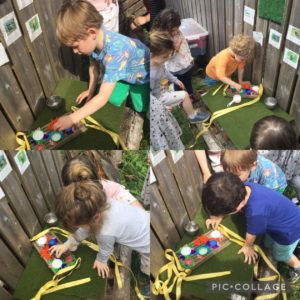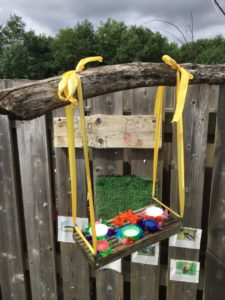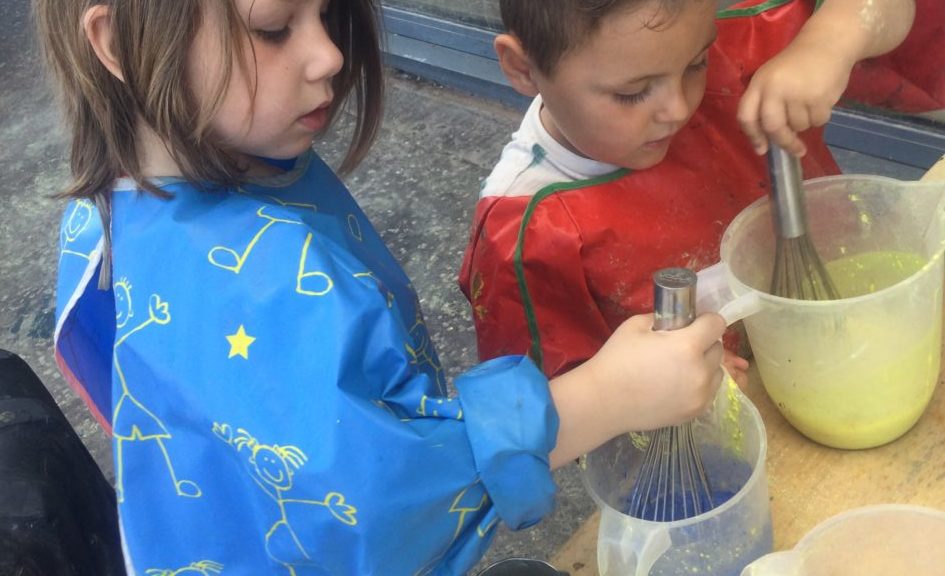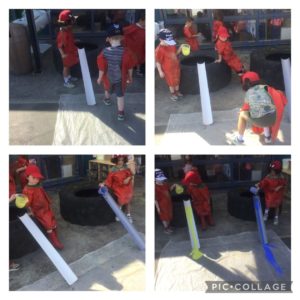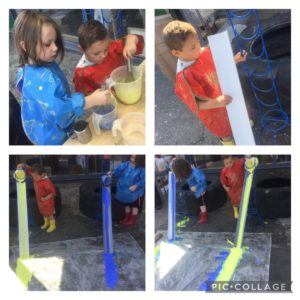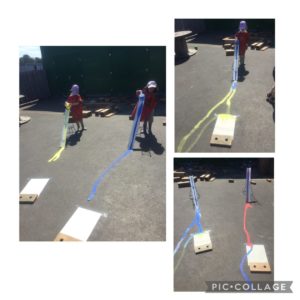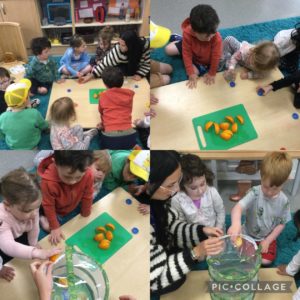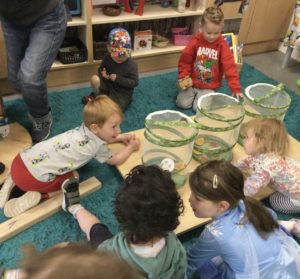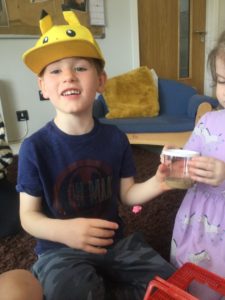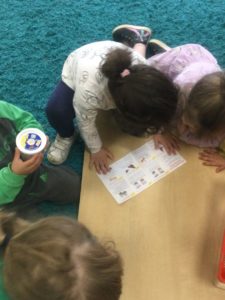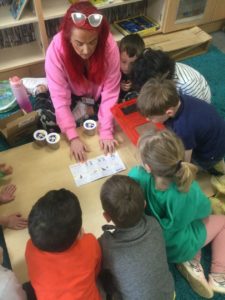From looking after and caring for our butterflies in nursery to saying goodbye and letting them go in our garden. We had discussions on where they flew away too and wondered if they would come visit us again. So the children decided they wanted to make our very own butterfly feeding table.
“Do you think the butterflies will come back.”
We gathered all materials needed and got started. The children showed brilliant fine manipulative skills when cutting and gluing.
”I’m making my flower all rainbow and the butterfly will see it.”
Once it was all glued down and ready to go we filled up the jam jar lids with sugar and water and looked around the garden for the best place to put it.
“It needs to be super high.”
The children decided it would be best to hang it up high so the butterflies can find it, so with a little help we tied it to a branch.
Now time to wait and see if our butterflies come and visit us 🦋

